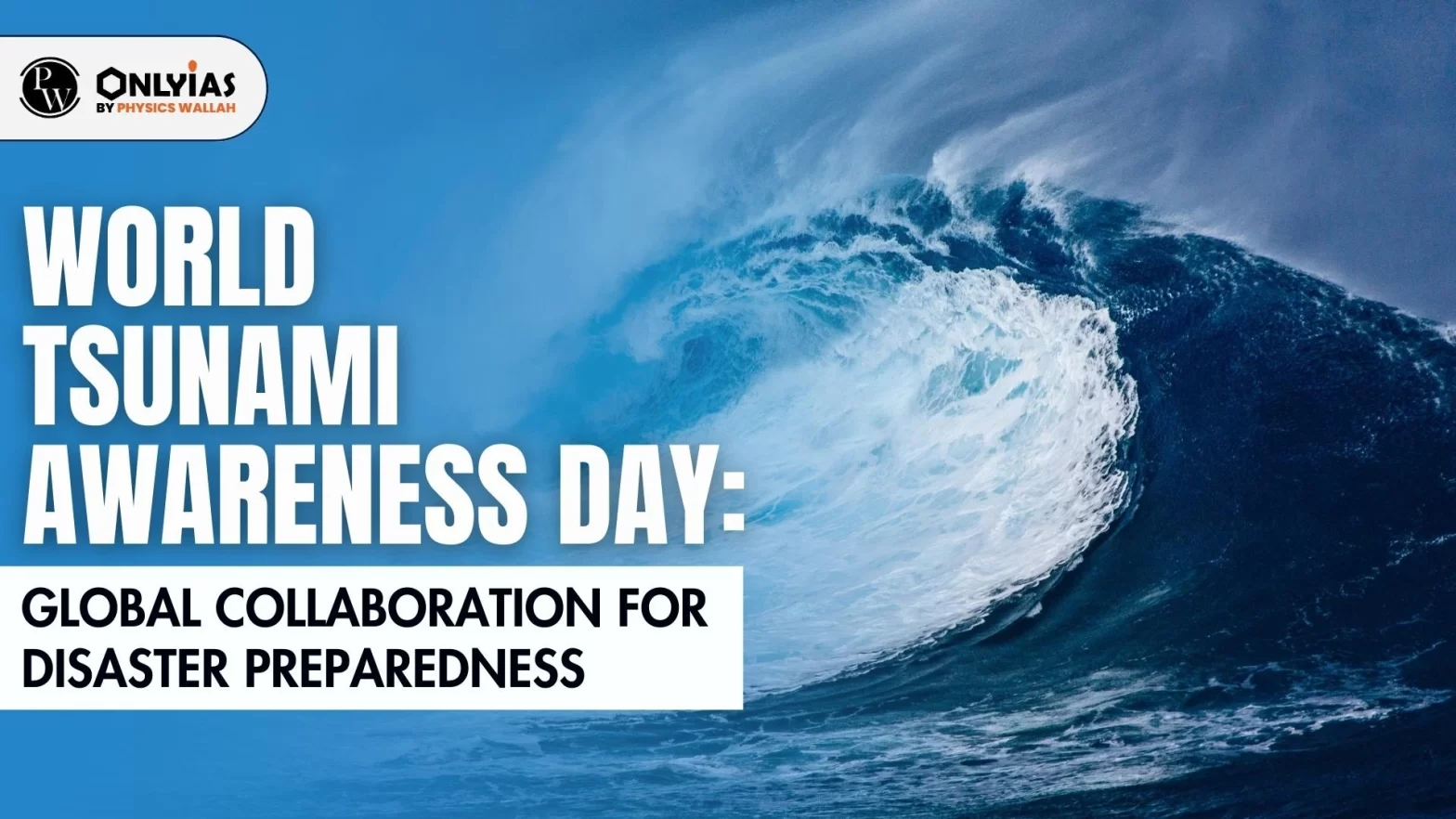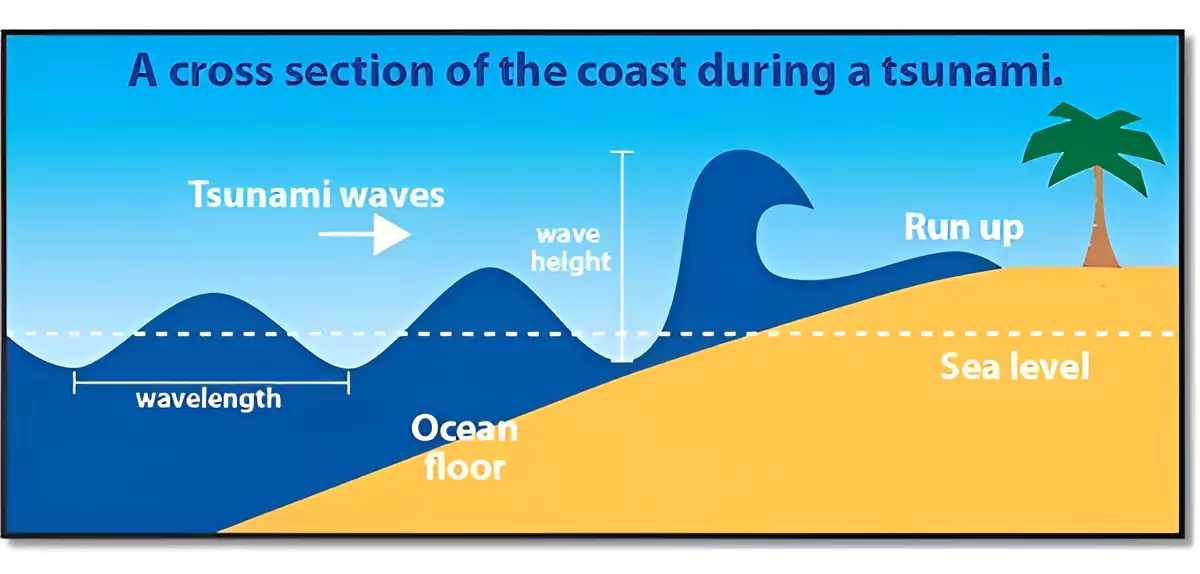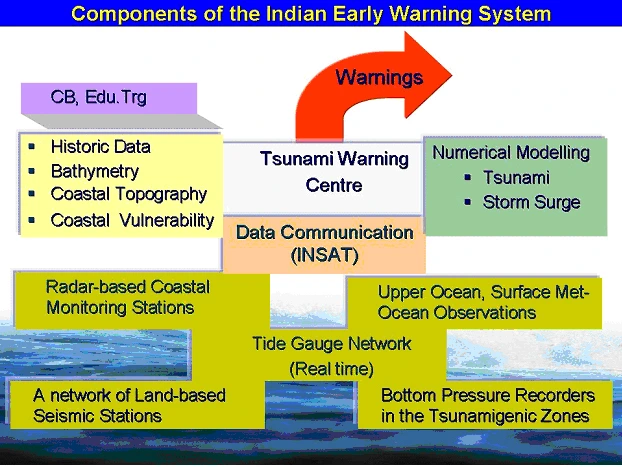Context: Every year, World Tsunami Awareness Day is observed on November 5.


| Wave Feature | Wind-Generated Wave | Tsunami Wave |
| Wave Speed | 8-100 kmph | 800-960 kmph |
| Wave Period | 5 to 20 seconds apart | 10 minutes to 2 hours apart |
| Wavelength | 100-200 mts apart | 100-500 kms apart |
| Features | Description |
|
|
|
|
|
|
|
|
|
|
|
|
The government has published a list of tsunami-prone locations on the coastal boundary of India. These consist of

World Tsunami Awareness Day is a reminder that Tsunamis are a real danger, and they generally occur without sufficient warning. In such cases the need for awareness, education, and preparation can help save lives and minimise the impact of devastation caused by such deadly oceanic waves.
| Must Read | |
| NCERT Notes For UPSC | UPSC Daily Current Affairs |
| UPSC Blogs | UPSC Daily Editorials |
| Daily Current Affairs Quiz | Daily Main Answer Writing |
| UPSC Mains Previous Year Papers | UPSC Test Series 2024 |
5th November is celebrated as World Tsunami Awareness Day
The theme for 2023 is "Fighting Inequality for a Resilient Future."
A tsunami is a series of enormous waves created by an underwater disturbance usually associated with earthquakes occurring below or near the ocean.
Tsunami Ready is a community performance-based programme to promote tsunami preparedness through active collaboration.

<div class="new-fform">
</div>